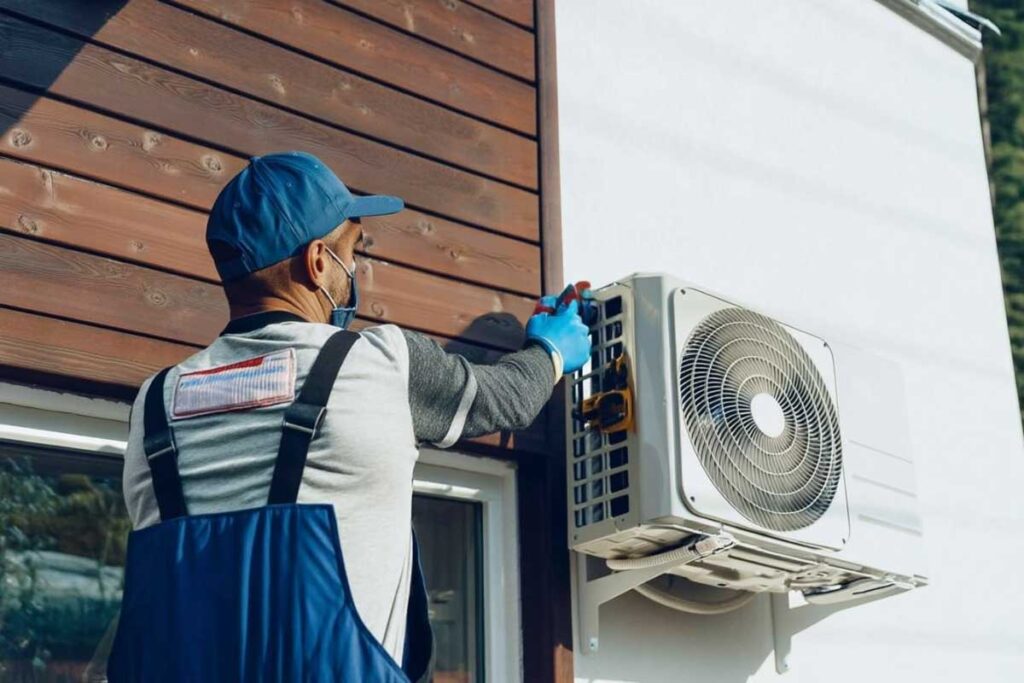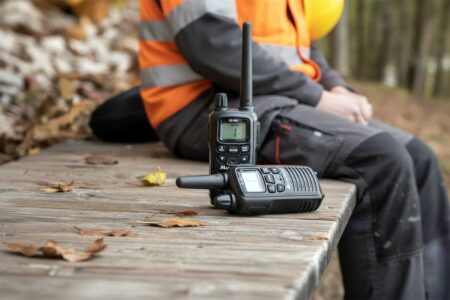When your AC breaks down, the last thing you want is surprise repair costs. Most homeowners assume their air conditioner is fully protected under warranty, but that’s not always the case. In this guide, we’ll break down how labor warranties work, what’s actually covered, and how to make sure you’re not left footing the bill when something goes wrong.
Is AC Covered Under Warranty?
Most air conditioners come with a manufacturer’s warranty, but what’s included, and how long it lasts, depends heavily on your unit’s brand, installation date, and whether you registered it. Typically, the manufacturer’s parts warranty covers major components like the compressor, coils, and other internal mechanical parts. However, it does not include labor. That means if something breaks, you’ll still need to pay out of pocket for the technician’s time unless you also have a labor warranty (more on that below). If you’re wondering how a standard air conditioner warranty stacks up against optional labor coverage, you’re not alone.
Your system probably has a manufacturer’s warranty. But here’s the catch: even if it does, you might still get a bill. While it typically covers the metal and mechanical guts, like the compressor, coils, and fan motors, it won’t help with the cost of diagnosing the issue, picking up parts, or installing them. Labor isn’t included unless you’ve bought separate coverage. And most homeowners aren’t aware that a full ac warranty means having both parts and labor included.
What many people don’t realize is how much the details matter. Registration can extend warranty terms, some brands offer up to 10 years of coverage instead of 5, but only if you register the unit within 60 to 90 days of installation. It’s also important to know that warranties often apply only to the original owner. Selling your home might void it, unless the warranty is a premium or extended version that explicitly allows transfers. The same nuances apply whether you’re reviewing your hvac warranty documents or deciding whether to add a third-party plan.
Maintenance plays a big role too. Neglecting routine care can void your warranty entirely. Something as simple as a missed inspection or a clogged filter could be enough for the manufacturer to deny your claim.
Think of your ac unit warranty like a safety net with a few holes, it’s definitely helpful, but far from foolproof.
Keep your installation paperwork, registration confirmation, and maintenance records organized. If you ever need to file a warranty claim, having everything ready will save you time and frustration.
Is AC Compressor Covered Under Warranty?
Your AC’s compressor is usually covered under the manufacturer’s parts warranty, and it should be, since it’s one of the most important and expensive components in the system. It’s often called “the heart” of your AC, and if it fails outside of warranty, replacement can cost $2,000-$3,000. But even if it is under warranty, you’re not necessarily off the hook. Parts warranties don’t include labor, refrigerant, or diagnostics, which means you could still face $1,000-$2,000 in out-of-pocket labor costs just to replace the compressor.
Standard coverage is 10 years if your unit was registered properly. Without registration, coverage often drops to 5 years. Some builder-grade systems offer only limited terms, and while certain premium models come with limited lifetime compressor warranties, those are rare and usually buried in fine print. Most warranties are also non-transferable, so if you sell your home, the coverage typically doesn’t carry over.
If you’re reviewing your hvac home warranty to see what’s included, look specifically at how compressor claims are handled. That’s a key area where a warranty on ac unit can either save or cost you thousands.
In short: the compressor is your AC’s engine, and yes, it’s covered under most manufacturer warranties, but don’t assume that means you’re fully protected. Ask us about compressor labor coverage. It’s a small investment now that could save you from a massive repair bill later.
HVAC Warranty: Parts vs. Labor
This is one of the most misunderstood areas in HVAC. A manufacturer’s parts warranty covers the cost of replacement components, like the fan motor, capacitor, or compressor, while a labor warranty, usually provided by the installer or a third-party, covers the cost of diagnosing the issue and installing those parts.
Take this common situation: your blower motor fails. If it’s under a parts warranty, you won’t pay for the motor itself. But unless you also have a labor warranty, you’ll still be responsible for paying a technician to diagnose the problem, drive to get the part, return to install it, test your system, and complete the paperwork. That can add up to hundreds of dollars, even though the faulty part was “covered.”
Without a labor warranty, you’re still on the hook for all labor costs.
Think of it like this: your car engine dies, and the manufacturer agrees to send you a new one for free, great. But you still need to pay a mechanic $2,000 to remove the old engine and install the new one. That’s exactly how most ac warranties work. Getting the part is only half the story; fixing the problem is the other half. Without both types of coverage, it’s like getting a free tire but paying $300 just to have it put on.
Why AC Warranties Don’t Cover Labor
Because parts are only half the story. Labor is often the bigger, and less expected, expense. A $20 part might end up costing $250 or more once you factor in technician time, diagnostics, travel, and system testing. And unlike car repairs where labor is often bundled into the price, HVAC systems typically separate parts and labor. Manufacturers won’t reimburse you for a technician’s time, they’ll only replace the faulty part.
That’s where a labor warranty comes in. It protects you from those unexpected service costs and gives you peace of mind that future repairs won’t wreck your budget. A simple sensor or coil might cost just $20 in parts, but labor could run you $400. No exaggeration. Labor warranties help cover those real-world costs, offer predictable pricing for repairs, and remove surprises, especially during heat waves, when service demand spikes and prices climb.
Modern ACs are like smart cars: amazing when they work, but expensive when they don’t. We’ve seen too many homeowners blindsided by repair bills. That’s why we offer clear, no-pressure labor warranty options, so you can say “yes” or “no” with all the facts. And for homeowners reviewing their air conditioner warranty options, we recommend planning beyond just parts, it’s labor that tends to sting later.
How to Buy a Labor Warranty on AC Units
You have a few choices depending on where you are in your system’s life. The best time to secure a labor warranty is at installation, ask your contractor about bundled options then. These typically cost less and offer the best terms. Some third-party providers, like JB Warranties or Trinity Warranty, also sell standalone or extended labor warranties that can sometimes be added up to 12 months after installation. HVAC service companies may include limited labor coverage as part of their annual maintenance plans; while not full labor protection, it can help reduce certain costs. Home warranties are another route, offering broader coverage that includes HVAC, but they usually come with higher service fees, stricter limitations, and longer wait times, so it’s important to read the fine print.
You’ve essentially got three paths: buy coverage from your installer at the time of install (usually the best coverage and price), add it later through a third-party provider (still solid, but may involve more paperwork), or skip it entirely and pay per repair, hoping for the best and budgeting extra just in case.
Always ask whether your labor warranty is “workmanship only” or if it includes diagnostics, travel, and part installation. The best ones do.
Our approach? We keep it simple. We offer straightforward, no-gimmick labor coverage you can purchase with your install, or shortly after. No endless phone calls, no vague “admin fees,” just real protection that works alongside your manufacturer’s ac unit warranty or hvac warranty.
Choosing the Right HVAC Home Warranty for Labor
Not all labor warranties are created equal. The strongest ones typically offer 5-10 years of coverage, ideally matching your parts warranty. Transferability is another big factor, if you sell your home, can the warranty pass to the new owner? That can be a major selling point. If your hvac home warranty includes this, it could add value at resale.
It’s also important to understand what the warranty actually covers. Does it include diagnostics, travel time, and refrigerant handling? Are you required to use a specific contractor, or can you choose your own technician? And how does the claims process work, can you go straight to the repair tech, or are you stuck getting pre-authorizations and dealing with delays?
Fine print matters, too. Some plans exclude things like “acts of God,” electrical surges, or broadly defined “improper use.” These vague terms can make it harder to get a claim approved.
Aim for a warranty that’s comprehensive, easy to use, and backed by a reputable company, whether that’s your HVAC installer or a third-party provider. You want something that covers travel, refrigerant, and diagnostics; gives you 5-10 years of protection without annual renewal games; and lets you pick your own technician instead of relying on a random 1-800-number contractor. Fast claims with no red tape are a must.
Skip anything vague or buried in fine print. Ask who actually pays the technician. We’re happy to walk you through what’s real and what’s fluff, we’ve read the fine print so you don’t have to. If you’re feeling overwhelmed, let us help you evaluate which air conditioner warranty or warranty on ac unit options truly deliver.
Is an AC Warranty with Labor Worth It?
In most cases: yes, a labor warranty is worth it, especially if you plan to stay in your home for more than 3 to 5 years. Labor is expensive. A single repair, like a blower motor or coil, can cost $300 to $1,000 in labor alone. And repairs tend to hit in years 3 to 8, well after your installer’s one-year labor coverage ends, but before most people are ready to replace their system.
A labor warranty helps you lock in today’s rates. With HVAC labor costs rising due to inflation and technician shortages, it’s a way to protect yourself from future price hikes. For example, a 10-year labor warranty might cost $500 to $700 upfront. If you need even one mid-level repair during that time, it often pays for itself. That’s why pairing your hvac warranty with added labor protection can be such a smart move.
We often explain it like this to our own families: average repairs fall between $350 and $1,200, most commonly in years 3 to 7. If you buy labor coverage at install, it usually comes out to less than $100 per year, and that cost doesn’t increase over time. And when your AC breaks during a heat wave, that kind of peace of mind is hard to beat.
So yes, if you’re planning to stay put, it’s absolutely worth it. You’re not just buying coverage, you’re buying control, predictability, and freedom from unexpected repair bills.






